Damaged chromosomes: A cause for reduced sow fertility
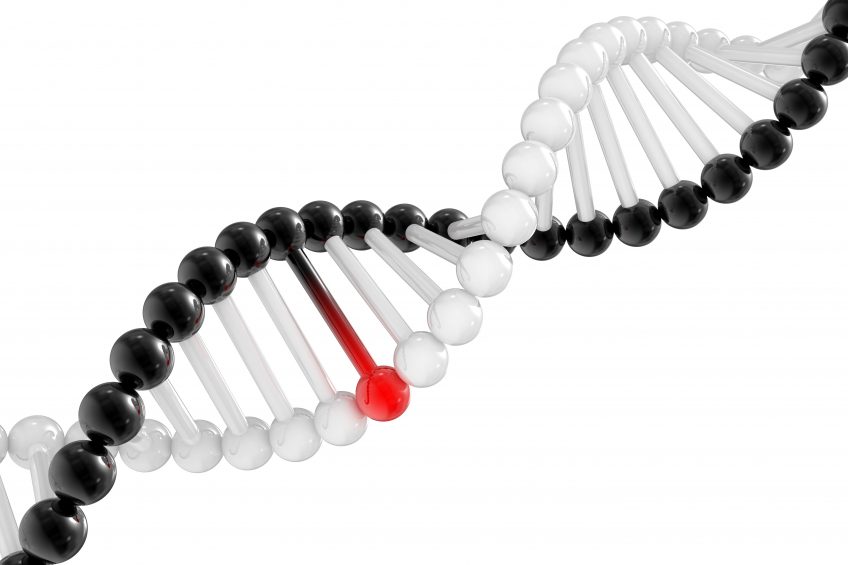
While the maternal side determines the majority of the genetic influence, there is also a role for the service sire. Although very little heritable, it can have a disastrous impact on farm fertility figures. A recent focus on Copy Number Variations (CNVs) may provide chances to detect issues in practice.
Reproductive performances in pigs have shown steady improvements in the last two decades. Fertility in sows has shown drastic improvements mainly due to selection for litter size, a sex-limited trait, expressed only in females. Figures of 30 weaned pigs per sow per year are achievable with modern genetics nowadays. Sows also get easier to manage due to the way they are selected for a larger number of traits that are linked positively to prolificacy. Most maternal lines have been selected for a vast amount of traits, including coming into heat, showing heat, litter size, number of teats, stillborn piglets, and pre-weaning losses.
More predictability in performance
Continuous selection in modern genetic programmes has led to sows that get more predictable in performance. The traits mentioned are traits with a large variation, which is only partly heritable. A trait like litter size has a heritability of 10%, varying from 6-12% in most research. So about 90% of the variation in litter size is due to other factors that do not follow normal additive genetic inheritance patterns.
Although the focus on this trait is in maternal lines and the trait is only expressed in females, there is another genetic factor that might also influence fertility. In most research studies the service sire effect was found to be very small compared to the maternally expressed part of litter size connected to ovulation rate. Although much smaller, only having a heritability varying from 1-3%, it might be desirable to be aware of its existence and the impact it can have on a farms production performances.
Boars might express lower fertility due to fever, some diseases or vaccinations can cause serious problems with temporarily or permanently reduced fertility. Most of the time libido related or semen quality parameters are also affected.
Lower than average boar fertility
Sometimes, however, none of these obvious factors seem to play a role and fertility of a single boar is much lower than average. What reasons can there be behind a negative effect of the breeding boar that is shown to be inherited? One of the most important factors here might be chromosomal damage or so-called ‘reciprocal translocations’ (also see Figure 1).
Figure 1 – Schematic depiction of unbalanced translocation.

These are described as chromosomal defects coming from the breeding boar.
Partly inherited, partly occurring by spontaneous mutations, these are being passed on to next generations. As a result, they are hard or impossible to eradicate completely from breeding lines. Screening breeding boars for these reciprocal translocations is an item to keep in mind to avoid negative surprises on fertility.
Microscopically visible
Reciprocal translocations are microscopically visible rearrangements of the chromosome. If these rearrangements lead to balanced translocation it means that no genetic information has been lost and the resulting offspring looks completely normal.
Only a limited part of translocations leads to reduced fertility. In this case, individuals produce unbalanced gametes, which in most cases lead to early embryonic losses or in some cases to lower viability or genetic defects. In most cases, litter size is reduced by 30-50%, but in some cases, specific translocations lead to complete infertility or to abortions. Use of mixed semen can partly or completely cover the impact of the presence of a boar being a carrier of reciprocal translocations impacting fertility.
When Dutch regulations, after a serious outbreak of Classical Swine Fever, requested the explicit use of single sire semen for traceability reasons, there was a clear necessity to screen the boar studs. Boars that were hypoprolific (under-average prolific) due to imbalanced reciprocal translocations occurred in about 0.7% of breeding boars.
The negative impact of chromosomal abnormalities or reciprocal translocations has led to cytogenetic screening programmes and specialised labs in many countries of the world. Due to the complexity and species specificity of the issue, it is not easy to organise systematic screenings.
Karyotyping
This screening or karyotyping requires fresh blood samples and most labs focus on a limited number of most common translocations. Special staining techniques give each chromosome a specific banding pattern. Trained professionals look at images of these stained chromosomes. They can detect from deviating patterns in banding whether a part of the chromosome is missing, duplicated or relocated.
The largest and most specialised lab for screening has been established about 15 years ago in Toulouse, France and was led by Dr Alain Ducos. Ever since, various labs worldwide have followed, offering a screening service mostly focused on a limited number of specific translocations. Various genetic companies and AI studs have since implemented systematic screenings. Screening can reduce rates of chromosomal abnormalities, but can never guarantee that lines are free of such problematic reciprocal translocations. Spontaneous reciprocal translocation seems to happen occasionally and can be transmitted to progeny again.

Copy Number Variations
A large part of genetic disorders appears to be caused by missing or duplicated small pieces of genetic information or so-called Copy Number Variations (CNVs). Most of these CNVs cannot be detected by the conventional screening or karyotyping. In human research with new techniques like Chromosomal Microarray Analysis (CMA), more than 100,000 CNVs have been detected during the last decade. There have been numerous research projects recently where these CNVs could be related to diseases, neurological defects, decreased fertility and development of cancers.
In a Canadian study by Tamas Revay and others, University of Guelph, Canada from 2015, there was attempted to discover CNVs that could be linked to either high or low prolificacy in boars. They looked at groups of boars with extreme values for a service sire effect or Direct Boar Effect (DBE).
Figure 2 – Descriptive statistics of the Direct Boar Effects (DBE) in the high and low fertile animals, the validating groups and all together.

From a large group of boars from different breeds they determined this DBE-value and selected the 10% highest and lowest boars in prolificacy. They used a specific method of detecting CNVs from the widely applied ‘Illumina 60k Porcine’ SNP. When genotyping reveals signal intensity differences from the Illumina-defined reference sample cluster, this could relate to DNA quantity deviations. In several of these cases the deviations could finally be linked to CNVs.
Out of the extreme groups for DBE, applying the described method, they discovered around 35 CNVs from which 19 appeared to be specific for low prolificacy group and 14 were specific for the high prolificacy group. Validating with randomly selected candidates from both groups revealed a very good match (see Figure 2).
Too little or too much genetic material
Chromosomal Microarray Analysis has been thoroughly applied in human research the last decade. This technique is relatively new and has been already applied in human research for several years. It enables to identify cases where too little or too much genetic material gets passed on to the gametes or the embryo. Chromosomal Microarray Analysis can detect CNVs at a much finer resolution and will be much more accurate than the currently applied techniques like karyotyping. Applying this technique to farm animals provides a way for further increasing the number of CNVs known. In human medical care, CMA is already widely used as a diagnostic tool for reproduction problems.
The economic impact can be large: an example. Let us assume a normal terminal sire boar producing semen for one year at an AI stud resulting in annually 1,500 doses or 750 double matings. If the average boar stays in production for two years, this results with about 85% farrow rate into 1,275 litters. A difference between high and low service sire effect could easily be more than one pig weaned. Assuming an economic value of a weaned pig of €40 this would lead to total losses of €51,000. If 10% of the boars would be affected it would mean for a 1,000 sow unit with 2.4 litters/sow/year a total impact of €9,600 or €9.60 on average per sow.
More studies needed
What can be expected in the near future? To exploit the CNVs for pig production traits a CNV based Genome Wide Association study for reproduction traits in pigs needs to be organised. Until now very few studies of CNV-based GWAS have been done in pigs. In recent Chinese CNV based GWAS focused on the genetic defect umbilical hernia in pigs, it was concluded that CNVs significantly contributed to the prevalence of this specific genetic defect.
Given the amount of potential economic impact of CNVs on reproduction and the indications from several research projects that relations between CNVs and reproduction are very likely to be expected, it seems just a matter of time before this research will turn in practical solutions for pig reproduction. A systematic screening of boars on AI studs for a range of CNVs associated with impaired reproduction will help farmers to decrease the current variability in reproduction figures. Techniques already applied in human medical care will help here to move forward.
 Beheer
Beheer
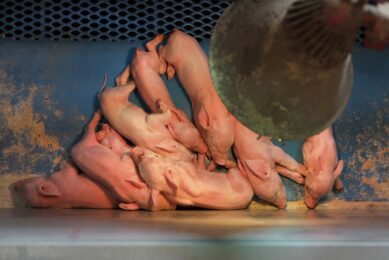
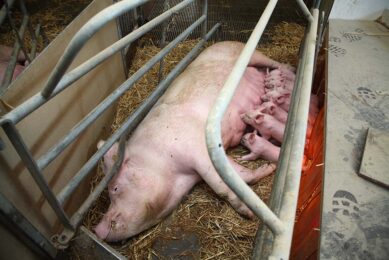
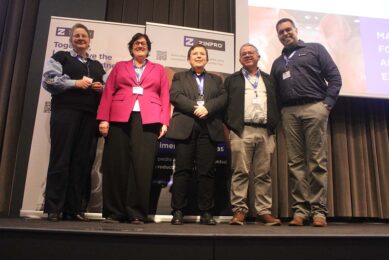
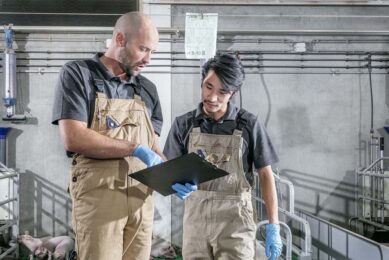



 WP Admin
WP Admin  Bewerk bericht
Bewerk bericht